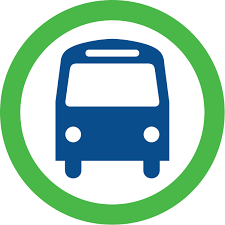Should I drive or bus? A brief look at the cost of these
choices from Langford to Victoria.
Suppose on a given day you are left
with the choice – Do I drive from Langford (we will say happy valley area) to
downtown Victoria, or do I take the bus? Let’s evaluate the cost of each mode
of transportation for a given day.
Implicit / Time Costs
From the happy valley to downtown Victoria
it is approximately 22 km, and according to google maps if you were to drive to
arrive by 9:00 am this trip would take you between 26 and 60 minutes, let's take
the midpoint and assume that on average this trip will take 43 minutes. Google
maps report a similar time commitment for your commute home (arrive by 5:00pm)
Thus the decision to drive by car will result in approximately 86 minutes of daily commuting.
This same trip by bus, direct, one
bus, is estimated to take 43 minutes for the commute in, and 52 minutes for the
commute home for a total of 95 minutes according to google maps. While some may
argue that this is unfair, but the choice to commute by bus will require i) time spent waiting for the bus and ii) time spent walking from your residence/work
to the bus stop. Let’s presume that this is 15 minutes. Thus, the decision to
commute by bus will result in approximately 110 minutes of daily commuting.
If we presume that you value your
time at a constant $15/hour we can compute an implicit time cost of commuting
for each mode of transportation such that we arrive at a daily cost of $21.50
for driving versus a daily cost of $27.50 for taking the bus.
Explicit / Actual Costs
While this time cost is an implicit
cost we can also work out the explicit or actual cost faced before utilizing
both to determine to the total cost for each mode of transit.
Driving by car is a distance of approximately
22km in each direction for a total of 44km daily. According to the US EPA, the
average fuel efficiency of vehicles in the US works out to 9.3 L/100km. As we have
no reason to assume a difference between the US and Canadian average, we can
utilize this value as well, scaling it up by 10% to recognize that most of this
commute time is in traffic and thus not at optimal fuel efficiency. Thus, we
will presume a rate of fuel usage of 10.19 L/100km. Given the distance of 44km
a day at this rate, driving would cost
the average commuter $8.02 a day
The explicit cost of taking the bus is
relatively easier to determine – If you were to buy a day pass, the current
price of this is $5.00. Thus, bussing
would cost $5.00 a day
Total Costs:
At this point working out
the total cost is as easy as summing the implicit and explicit costs – doing so
we get the following total costs for each mode of transportation:
Thus,
we see that for the average commuter, the daily cost of their commute is the cheapest by driving oneself via personal vehicle. If the average commuter sees
the only benefit as arriving at work and arriving home, then there is no
difference in benefit, and thus cost minimization will result in the optimal
choice, driving.
Sensitivity analysis:
This analysis is subject to
several assumptions. The two primary assumptions evaluated are the cost of time
and the fuel efficiency of one’s vehicle. Thus, it is possible to obtain
differing results by varying these values.
With
respect to the cost of time, at a rate of $7.55/hr, a commuter would be
indifferent between taking the bus or driving. As one's cost of time drops below
this, bussing becomes the better choice, while as one's cost of time rises above
this value driving becomes the better option.
With
respect to fuel efficiency, at a rate of 13.97 L/100km a commuter is indifferent
between bussing or driving. As fuel efficiency drops below 13.97, driving
becomes the optimal choice, while as fuel efficiency rises above 13.97 bussing
is cheaper.
Finally,
if we presume constant average fuel efficiency, a gas price of $2.455/L is the indifference
point between bussing and driving, with prices above $2.455 resulting in
bussing being optimal.
Of
note, or concern for transit advocates, is that with the increasing
electrification of vehicles, the impact of this is two-fold in that i) Fuel
efficiency drops to 0 L/100km, and ii) electric commuters will not need to
worry about fuel prices. Thus, with increased electrification, only the
implicit, time cost, enters into the decision framework. Thus for public transit to win out over personal electric vehicles, either the unit cost of utilizing one's vehicle would have to increase in other forms (paid parking?) or the time cost of public transit would need to decrease through more frequent and direct routes.




